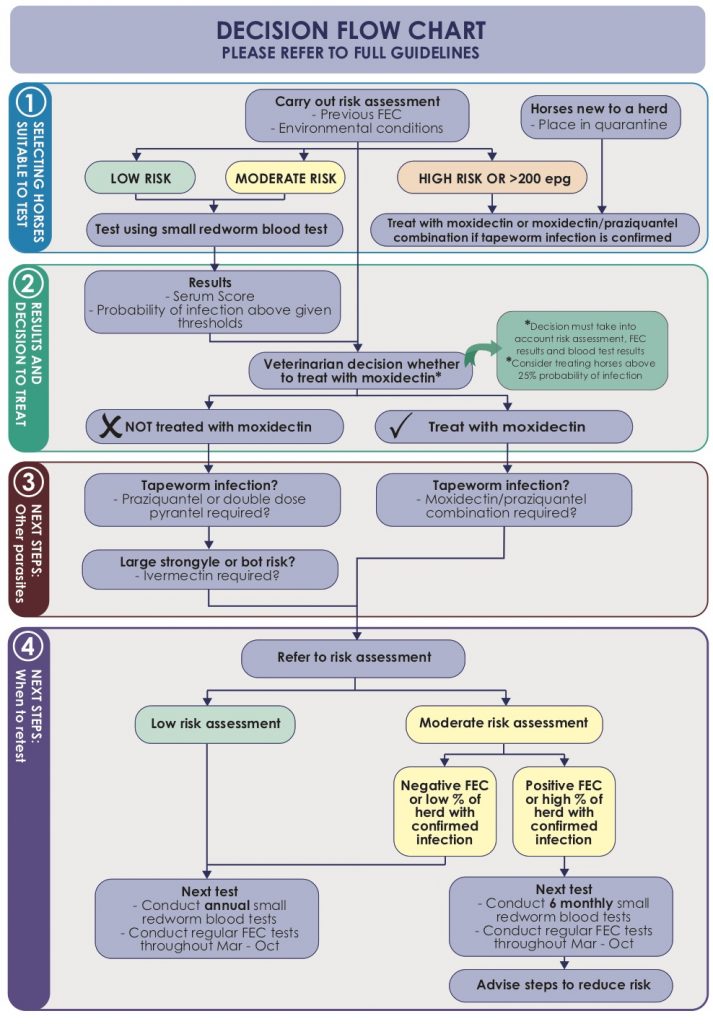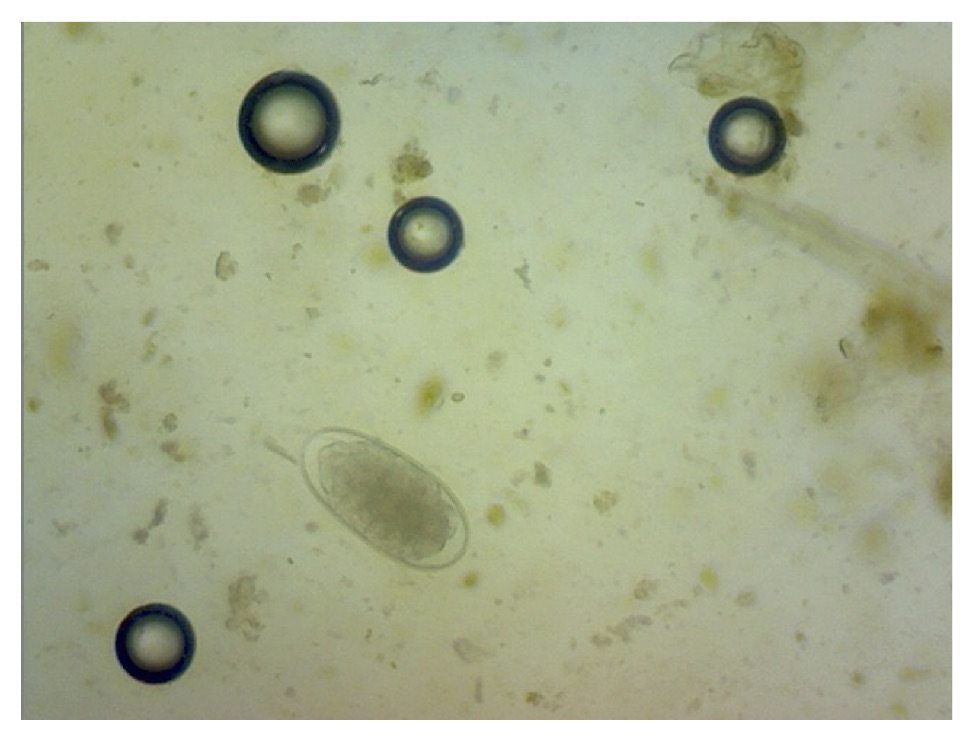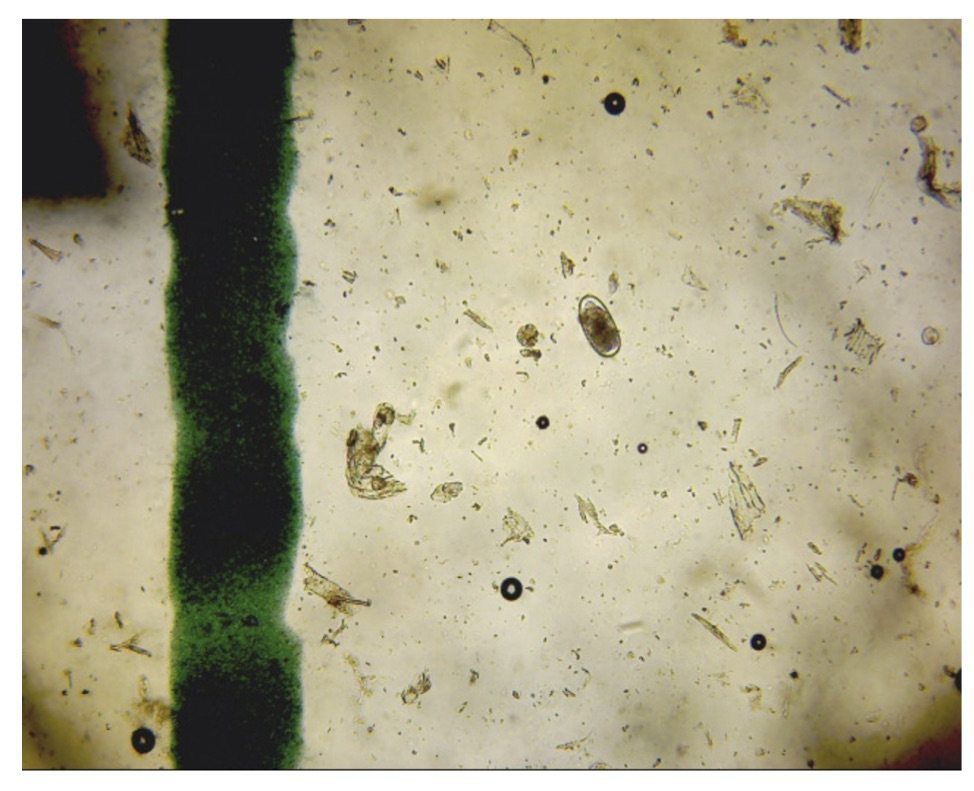Planning your worming strategy
In order to make this decision process more transparent we have implemented a “worming package”, in which the diagrams below form the basis of our treatment protocol.
This package includes us assessing your specific horses risk in its given population. We will use the diagrams below to select which animals need treatment, which need monitoring and coupled with advice on pasture management we hope to keep worm burdens to an acceptable level.
Careful consideration should always be made when choosing when and how to worm horses. Using the flow diagram below you should be able to put your horse into one of three categories. Low / Medium and High risk.
(FEC = Feacal Egg Count / Worm Count)
Types of wormers
- Fenbendazole (Panacur) and Mebendazole (Telmin)
- Target: Stomach and intestinal worms including larval, migrating and encysted stages, lungworm and also kills the nematode (worm) eggs
- Length of action: 6-8 weeks
- Pyrantel (Pyratape P & Strongid P)
- Target: Stomach, intestinal worms and tapeworms
- Length of action: 4-6 weeks
- Ivermectin (Eqvalan, Vectin) and Moxidectin (Equest)
- Target: Stomach and intestinal worms including larval arterial and tissue stages, lungworm and bot fly larvae
- Length of action 8-12 weeks
- Praziquantel (Equitape)
- Target: Tapeworm
- Twice yearly treatment, 6 months apart ideally in Spring (March) and Autumn (Sept)







